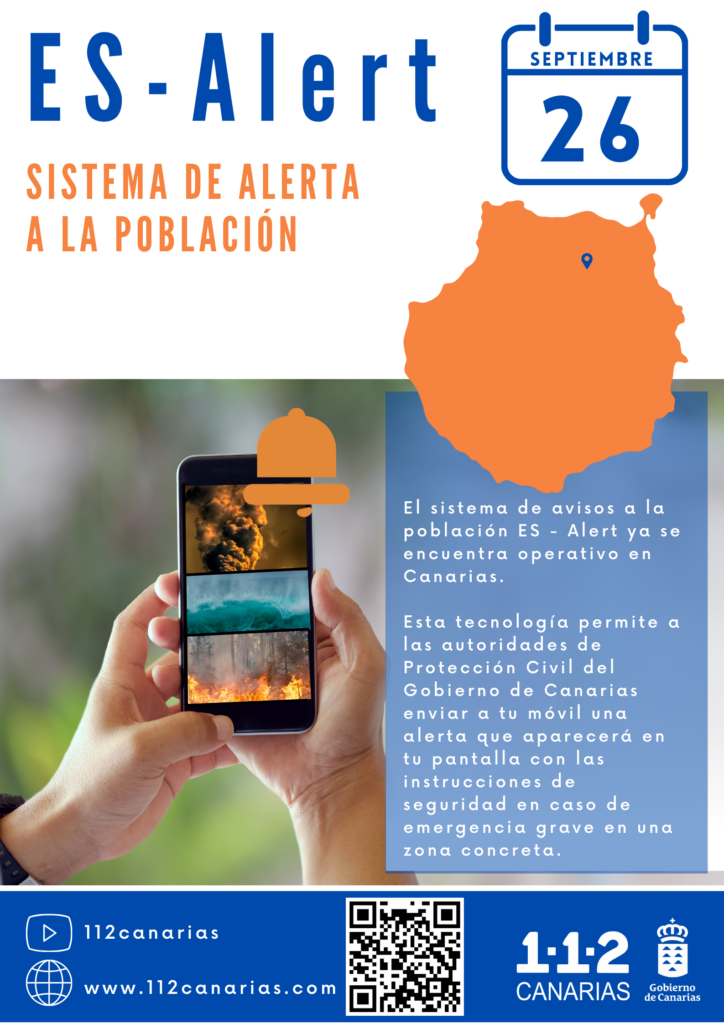The Canary Islands Government will conduct a test of the ES-Alert emergency warning system across Gran Canaria on Thursday, September 26. This system is part of Spain’s National Alert Network and is designed to send immediate SMS alerts to mobile phones in areas affected by imminent or ongoing emergencies. These alerts will provide crucial information on the safety measures that people should follow, allowing for accurate information and a quicker response to serious situations.
The message will be sent by the Emergency and Security Coordination Centre (CECOES) 112, between 10:00 and 12:00. People should receive the alert either when it is sent or when they enter the mobile coverage area. If your phone is off or in airplane mode, you will not receive the message. Boats near the island’s coast may also receive the alert.
If you get the message while driving, don’t be alarmed. Remember, this is only a test. Safely stop your vehicle as soon as possible, read the message, and press “accept.” There is no need to respond or call 112. This alert, issued by the Civil Protection Authority, is simply a test of the emergency communication system. The public is being informed in advance to avoid causing unnecessary concern.
Once accepted, the message will disappear from your phone. The alert will also include a survey, which is important for assessing the test’s reach and effectiveness. This feedback helps emergency services improve the system.
If you have elderly relatives, it is recommended to explain the alert in advance to avoid causing any worry. If your phone is set to a language other than Spanish, you may receive the message in English.
Most mobile phones with a data connection can receive these alerts, as long as the feature is enabled. Phones running Android version 11 or higher or iOS version 15.6 or higher have the alert reception option enabled by default. If your phone has an older version, you can check how to update it through the link provided by CECOES: 112canarias.com.
ES-Alert can be activated during disasters such as fires, floods, volcanic eruptions, or severe weather events. There’s no need to install any app or register—alerts will automatically reach people in affected areas, providing them with essential safety instructions.














